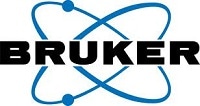In recent times, the Transmission Kikuchi Diffraction (TKD) method has been established as a SEM-based technique that can deliver results similar to EBSD but with up to one order of magnitude improvement in spatial resolution.
Existing EBSD hardware and software can be used with the TKD technique however, it requires electron transparent samples such as crystalline nanoparticles, free standing films, and TEM lamella.
Bruker understood the capability of the TKD technique and integrated it into the QUANTAX EBSD system. The TKD mode in QUANTAX EBSD is easy to use and facilitates users of all level to acquire high quality data. Bruker designed a special sample holder for QUANTAX EBSD that allows combining EDS analyses with TKD analyses.
TKD Professional Toolkit
The TKD Professional Toolkit from Bruker enables coupling TKD analyses with EDS measurements. The key element of this toolkit is the specially designed TKD sample holder, which facilitates handling of any type of thin sample prepared on a TEM grid and allows making measurements even at a working distance of 3mm.
The sample holder’s clamp design facilitates fixing and handling of fragile samples such as thin samples. Figures 1 and 2 represent the clamp in its ‘open’ and ‘closed’ position, respectively. Its innovative design allows for combined TKD/EDS measurements devoid of shadowing effects and prevents collision risks even during operation at very low sample to detector distances.
.png)
Figure 1. TKD sample holder with open clamp
.png)
Figure 2. TKD sample holder with closed clamp
TKD Calibration Assistant
The pattern center calibration algorithm has been fine-tuned to deliver optimum performance in the TKD geometry, i.e., with the pattern center that have PCy coordinate values nearer to zero or even negative. The pattern center calibration step is completely automatic.
Analysis of Fine-Grained Silicon Layer
The sample used was an ultra fine-grained Si thin film deposited on a glass substrate. The EBSD results were obtained at 7kV EHT using 30nm step size (Figure 3). The TKD results were acquired utilizing a beam acceleration of 30kV and a step size of 11nm (Figure 4). No data cleaning was used in the results. As can be seen from the results, the TKD orientation map has better resolution and quality than the EBSD orientation map.
.png)
Figure 3. Standard EBSD orientation map of the Si film
.png)
Figure 4. TKD orientation map of the same sample
FSE Images in Transmission Mode
Likewise, a vast resolution improvement can be observed in forescattered electron (FSE) images of a highly deformed pure aluminum sample acquired using the ARGUS™ FSE/BSE imaging system. Figure 5 shows a number of grains with a network of dislocation walls generated through the deformation process. Figure 6 depicts a higher magnification image, wherein individual dislocations are highlighted.
.jpg)
Figure 5. FSE image in transmission mode showing a network of dislocation walls (highlighted)
.png)
Figure 6. FSE image acquired in transmission mode with individual dislocations highlighted

This information has been sourced, reviewed and adapted from materials provided by Bruker Nano Analytics.
For more information on this source, please visit Bruker Nano Analytics.